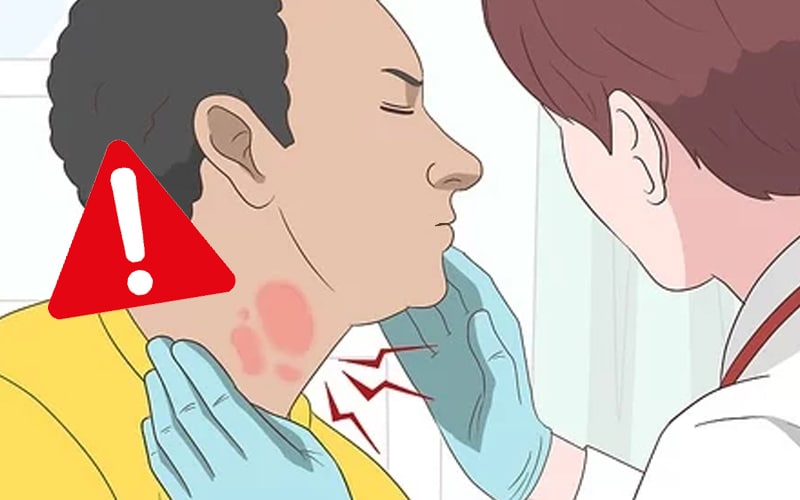Skin changes can often be benign, but certain marks or symptoms should never be ignored. Recognizing these warning signs can be crucial for your health and well-being. One particular mark that requires immediate medical attention is the appearance of a dark, sudden spot or a change in an existing mole that has an irregular shape, color, or texture. If you notice this mark, it’s essential to understand its potential implications and take action without delay.
Understanding Skin Changes
The skin is the largest organ of the body, and it can reflect our overall health. Changes in the skin can result from various factors, including environmental exposures, aging, and underlying health conditions. While many skin changes are harmless, some can signal serious medical issues, such as skin cancer, infections, or autoimmune diseases.
The ABCDEs of Melanoma
When assessing new or changing marks on your skin, dermatologists often refer to the ABCDEs of melanoma, which stand for:
- Asymmetry: One half of the mole or mark does not match the other.
- Border: The edges are irregular, ragged, or blurred.
- Color: The color is not uniform and may include shades of brown, black, or even red, white, or blue.
- Diameter: The spot is larger than 6mm (about the size of a pencil eraser), although melanomas can be smaller.
- Evolving: The mole or mark is changing in size, shape, or color.
If you notice any of these signs, especially if they appear suddenly, you should consult a healthcare professional immediately.
The Importance of Early Detection
Early detection of skin cancer, particularly melanoma, can significantly improve outcomes. According to the American Academy of Dermatology, melanoma is the deadliest form of skin cancer, but if caught early, it is highly treatable.
In addition to melanoma, sudden changes in the skin can also indicate other serious conditions, such as:
- Infections: Bacterial, viral, or fungal infections can cause sudden skin changes, redness, swelling, and pain. Conditions like cellulitis or herpes can escalate quickly and may require urgent treatment.
- Autoimmune Disorders: Diseases like lupus or vasculitis can manifest as sudden rashes or skin lesions, which may signal a more systemic issue that needs medical attention.
- Allergic Reactions: Severe allergic reactions can lead to hives, swelling, or anaphylaxis, which is life-threatening and requires immediate care.
When to Call 911
You should call 911 immediately if you notice:
- A New, Unexplained Mark: Any new dark or irregular spot on your skin that appears suddenly and doesn’t resemble any existing marks.
- Changes in an Existing Mole: If an existing mole changes in color, shape, or size, particularly if it becomes painful, itchy, or bleeds.
- Skin Symptoms Accompanied by Other Signs: If the skin change is accompanied by systemic symptoms like fever, chills, or difficulty breathing, it could indicate a severe infection or allergic reaction.
- Severe Skin Reactions: Rapidly spreading rashes, significant swelling, or any signs of anaphylaxis (like difficulty breathing or swelling of the face/lips) warrant immediate medical attention.
What to Expect During Your Medical Visit
If you go to the emergency room or urgent care, the healthcare team will typically perform the following:
- Physical Examination: The doctor will examine the affected area and any other suspicious marks on your skin.
- Medical History: You may be asked about your medical history, family history of skin conditions, and any recent changes in your health or environment.
- Biopsy: If the doctor suspects skin cancer or another serious condition, a biopsy may be performed to analyze the cells in the affected area.
- Treatment Options: Depending on the diagnosis, treatment may range from topical medications to surgical intervention or further testing.
Preventative Measures and Skin Care
While not all skin changes can be prevented, there are steps you can take to minimize your risk:
- Regular Skin Checks: Perform monthly self-exams of your skin and be aware of any changes. Consider seeing a dermatologist annually for a professional skin exam.
- Sun Protection: Use sunscreen with an SPF of at least 30, wear protective clothing, and avoid tanning beds to reduce your risk of skin cancer.
- Healthy Lifestyle: Maintain a balanced diet, stay hydrated, and avoid smoking, which can contribute to skin damage and cancer risk.
Bottom Line
Noticing a sudden mark on your skin, particularly one that fits the ABCDE criteria of melanoma, should never be taken lightly. Prompt action can be lifesaving. Remember that early detection is key in managing skin conditions effectively. By being vigilant about changes in your skin and understanding when to seek help, you can significantly enhance your chances of early diagnosis and successful treatment.
If you notice any concerning skin changes, especially those that appear suddenly or evolve, don’t hesitate—call 911 or seek emergency care immediately. Your health is paramount, and taking quick action can make all the difference.
